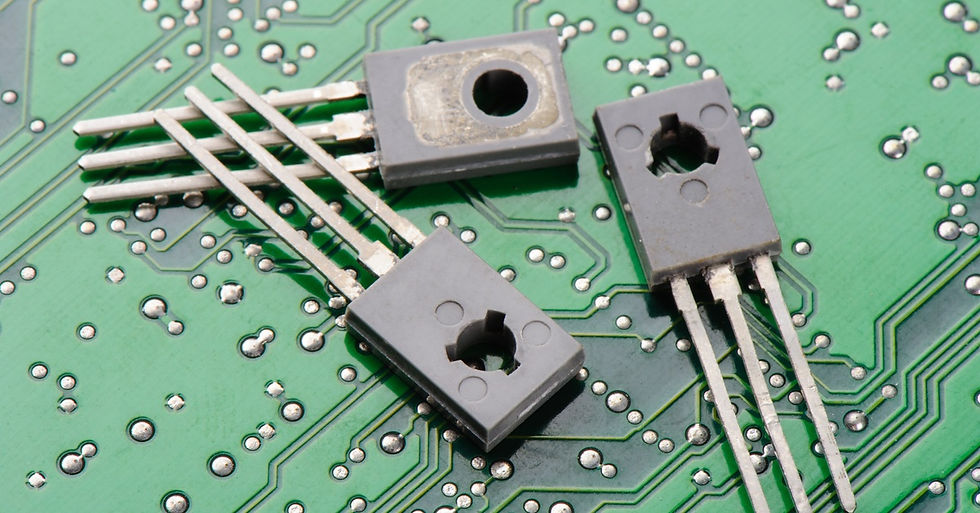The Benefits of Component-Level Repairs to Your Vector Drive
- CNC Service Company
- Jul 1
- 4 min read

Unlike full replacements or generalized overhauls, focusing on component-level solutions enables targeted fixes that address issues without requiring the complete dismantling of the system or incurring unnecessary costs. The benefits of component-level repairs for vector drives have become vital for businesses to maximize the lifespan of their equipment and minimize downtime. By concentrating repairs at the granular level, industries can improve their operational reliability and reduce expenses.
The Importance of Vector Drives
Vector drives are a critical element in modern machinery; they ensure precise control over the machinery’s motor speed, torque, and performance. By converting electrical energy efficiently and controlling motor capabilities, vector drives play a pivotal role.
These devices are foundational for industries such as manufacturing, automation, and energy production. Downtime caused by a malfunctioning vector drive can result in reduced production and financial losses, making repair rather than outright replacement an attractive option.
The Economics of Component Level Repairs
Imagine if a small internal capacitor was failing within a vector drive. Rather than discarding the entire unit, a repair technician would quickly swap out the faulty capacitor and restore operational functionality.
Component-level repairs are a cost-effective alternative to replacing entire vector drives. When a single part wears out or malfunctions, addressing the specific piece eliminates the need to invest in completely new equipment. This approach saves money and minimizes the material waste associated with replacements.
Reduce Downtime With Focused Repairs
Efficiency in any industrial setting depends heavily on minimizing downtime. Choosing component-level repairs ensures that machines spend less time out of operation. For example, a malfunction detected in a cooling fan within the vector drive could quickly escalate to a broader system issue if not addressed promptly. Component-level attention enables technicians to pinpoint the faulty fan, repair or replace it swiftly, and restore operations online. This streamlined repair method maintains production schedules and keeps factory floors productive.
Enhanced Performance
When technicians perform Haas spindle repair, the goal is to restore the equipment to its original operating condition. Similarly, component-level repairs improve specific areas within a vector drive, resulting in enhanced performance. Replacing outdated transistors or upgrading components to newer, more efficient models can lead to better energy efficiency and smoother operations. This targeted approach helps the vector drives regain functionality and improve the machine’s efficiency.

Environmental Benefits of Repairs Over Replacements
Choosing component-level repairs over full replacements offers substantial environmental benefits, especially in the electronics and industrial sectors. Repairing instead of replacing reduces the volume of e-waste, which continues to grow rapidly and poses serious threats to ecosystems and public health.
When companies discard functional vector drives due to minor faults—like a defective capacitor or power supply—they waste valuable materials. This contributes to the carbon emissions associated with producing and transporting new equipment.
By focusing on targeted repairs, businesses conserve raw materials like copper, aluminum, and rare earth elements, which are commonly used in electronic components. This approach also prevents outdated equipment from ending up in landfills, where it could leak harmful substances into the soil and water.
Building Expertise With Component Repairs
Component-level repairs encourage the development of specialized expertise within teams of technicians. Over time, repair professionals gain immense knowledge about the specific makes and models of drives, enabling faster and more accurate diagnostics.
For example, a technician who specializes in repairing cooling mechanisms within vector drives will quickly identify airflow-related issues. This depth of knowledge saves time and helps detect problems before they propagate into larger, more complex issues.
Detailed Diagnosis Drives Accurate Repairs
When addressing a component-level repair, the diagnostic phase assumes critical importance. Sophisticated diagnostic tools pinpoint problem areas with precision, enabling engineers to locate and address faults effectively.
Picture an instance where fluctuating motor speeds point to a malfunctioning vector drive. Through advanced measurement tools, a technician identifies an underperforming diode circuit. Pinpointing the issue at such a granular level repairs only the affected component, leaving the rest of the device intact and functional.
Retain System Configurations and Settings
Replacing an entire vector drive often requires reconfiguring settings, recalibrating machinery, and integrating the device into complex control systems. However, performing component-level repairs retains the existing system configurations.
Consider a drive operating within an automated conveyor belt assembly. Repairs limited to a worn-out transistor preserve the belt’s programming and timing. This reduces the likelihood of setup errors and guarantees smoother machinery integration.

Access to Genuine and Upgraded Parts
Component-level repairs to your vector drive involve sourcing genuine, high-quality parts that restore functionality while adhering to the original manufacturing standards. Many repair services also offer the option of upgrading outdated components with more efficient alternatives. A simple replacement of an insulated-gate bipolar transistor (IGBT), for instance, could enhance the drive’s energy efficiency dramatically. Access to authentic and improved parts elevates the reliability and operational potential of these essential pieces of equipment.
Long-Term Savings Within Industrial Operations
Although component-level repairs yield immediate economic benefits, they also contribute to significant long-term savings. Repeated replacements of full vector drives can rack up substantial costs over time, unnecessarily tethering budgets. Targeting specific issues enables businesses to have predictable repair costs while mitigating the need for ongoing investment in new equipment. A company relying on heavy machinery, such as a metal fabrication firm, could save thousands annually through this focused approach.
Reliable Repairs
Repair strategies based on specific fault analysis enhance the reliability of vector drives after repair. When a repair service replaces components such as capacitors or heat sinks, the repaired device returns to operation closely resembling its original factory condition. An organizational example might include automotive assembly lines, where component-level repairs reduce disruptions, boosting confidence in the equipment’s integrity.
The Role of Professional Partnerships
Building relationships with trusted repair services ensures consistency and quality in component-level repairs. Collaborating with reliable repair technicians who are well-versed in vector drive construction and functionality can simplify operational challenges.
Final Thoughts on the Value of Component Repairs
Component-level repairs offer numerous advantages, including cost savings, reduced downtime, improved reliability, and enhanced sustainability. Businesses that adopt this approach ensure the vector drives function for long durations while avoiding unnecessary expenditures.
Additionally, these repairs foster a technically enriched team of repair professionals. By considering this approach, industries can move toward a future where machinery operates efficiently without burdening budgets or environmental resources. When seeking repair solutions, always prioritize expertise and demonstrate a commitment to quality.
.png)



Comments